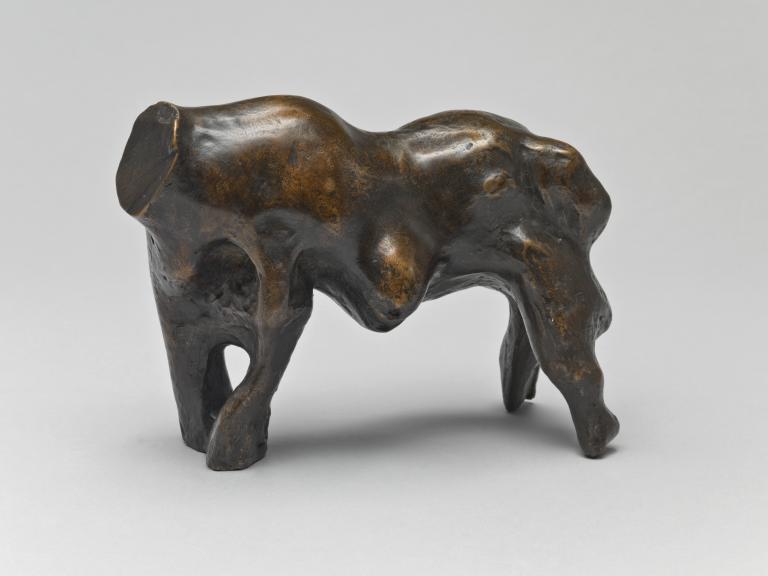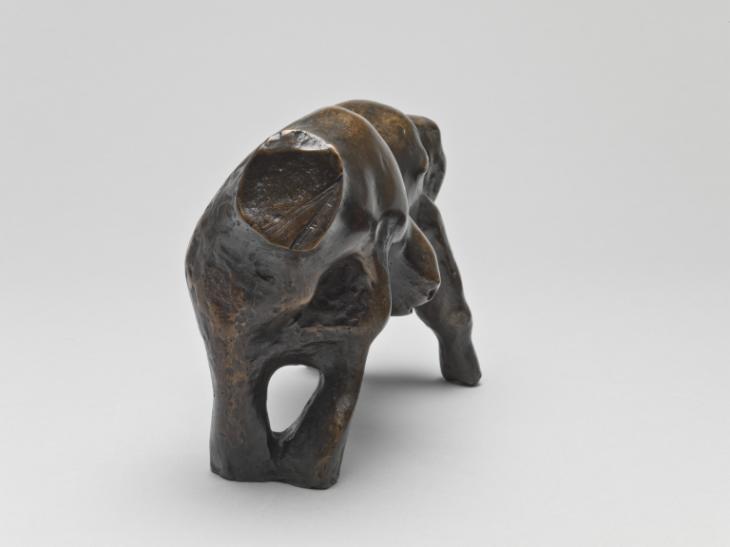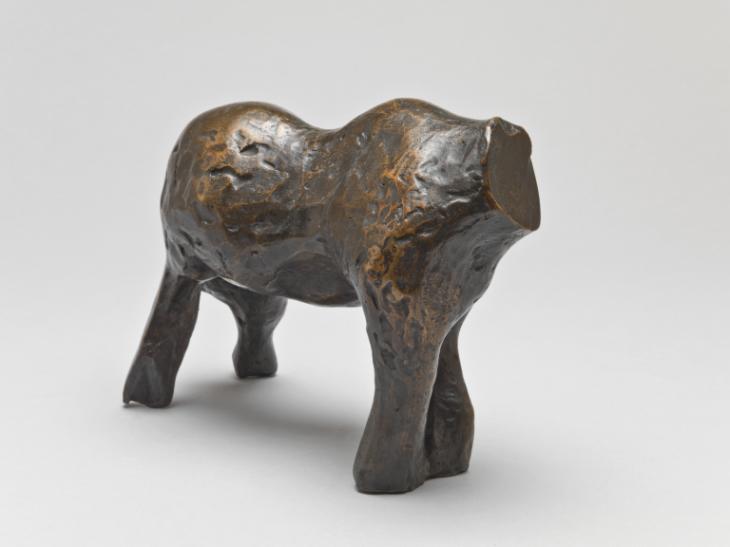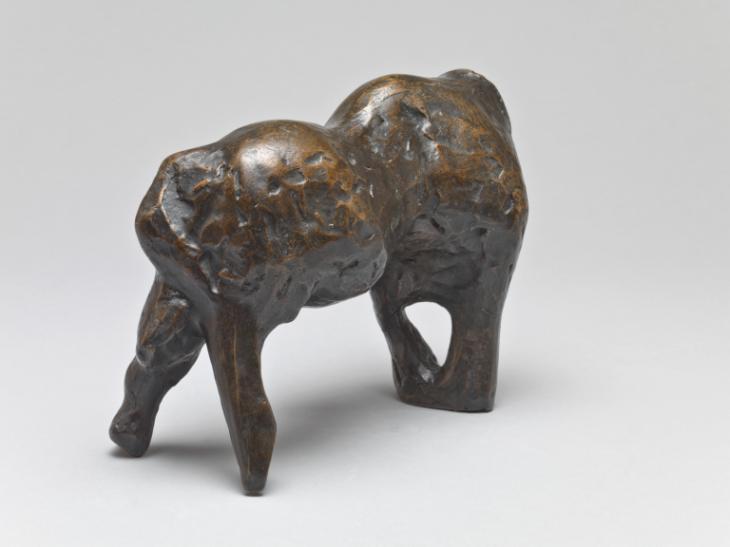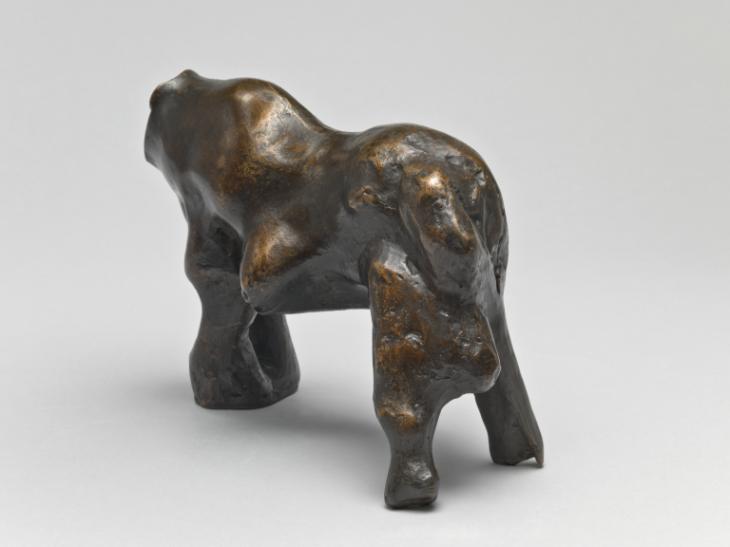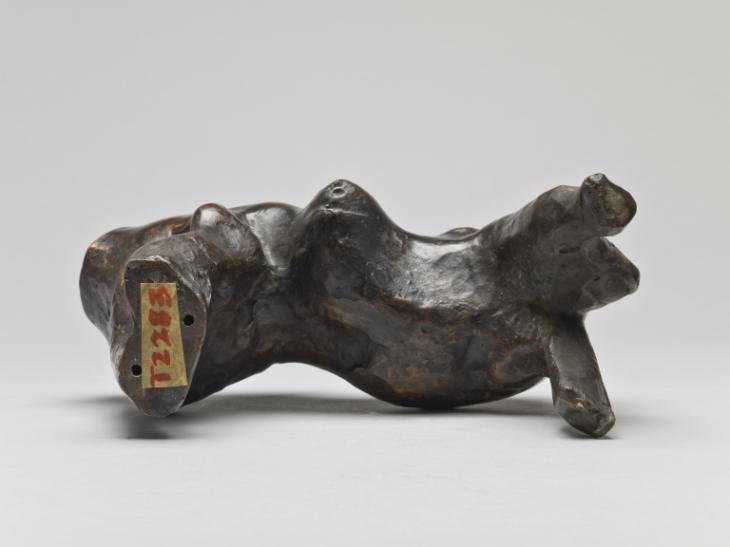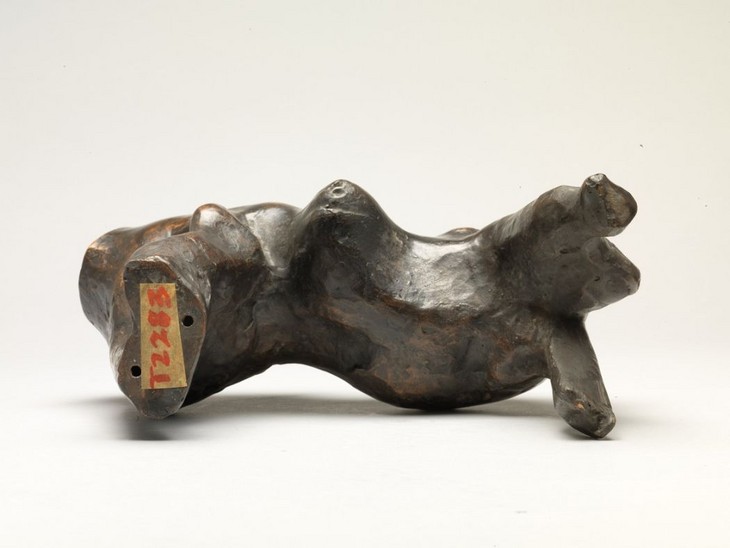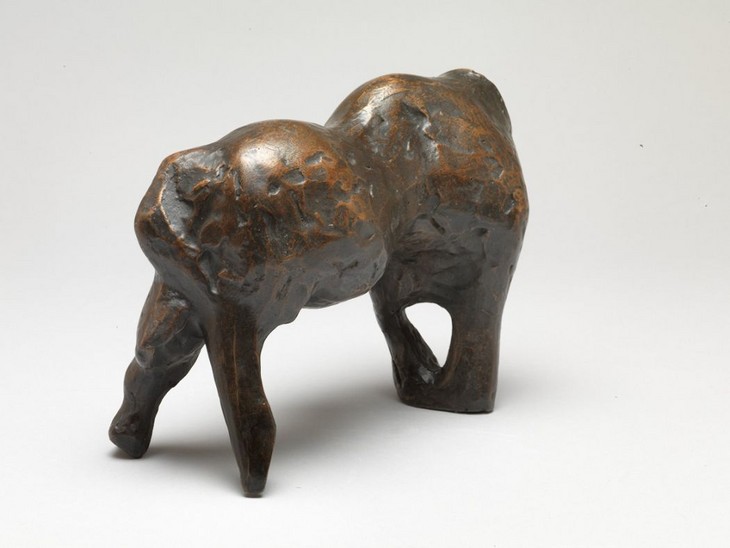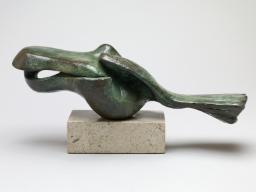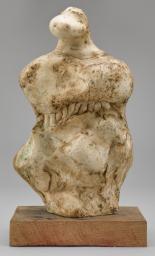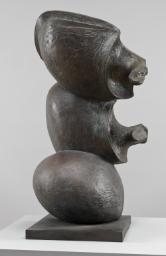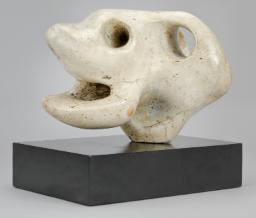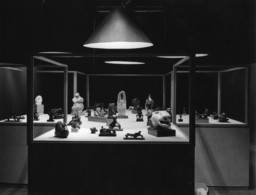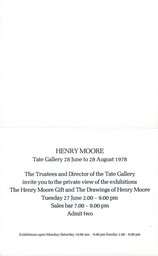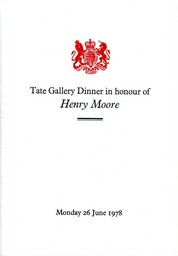Henry Moore OM, CH Headless Animal 1960, cast 1964
Image 1 of 6
-
 Henry Moore OM, CH, Headless Animal 1960, cast 1964© The Henry Moore Foundation. All Rights Reserved© The Henry Moore Foundation. All Rights Reserved
Henry Moore OM, CH, Headless Animal 1960, cast 1964© The Henry Moore Foundation. All Rights Reserved© The Henry Moore Foundation. All Rights Reserved -
 Henry Moore OM, CH, Headless Animal 1960, cast 1964© The Henry Moore Foundation. All Rights Reserved© The Henry Moore Foundation. All Rights Reserved
Henry Moore OM, CH, Headless Animal 1960, cast 1964© The Henry Moore Foundation. All Rights Reserved© The Henry Moore Foundation. All Rights Reserved -
 Henry Moore OM, CH, Headless Animal 1960, cast 1964© The Henry Moore Foundation. All Rights Reserved© The Henry Moore Foundation. All Rights Reserved
Henry Moore OM, CH, Headless Animal 1960, cast 1964© The Henry Moore Foundation. All Rights Reserved© The Henry Moore Foundation. All Rights Reserved -
 Henry Moore OM, CH, Headless Animal 1960, cast 1964© The Henry Moore Foundation. All Rights Reserved© The Henry Moore Foundation. All Rights Reserved
Henry Moore OM, CH, Headless Animal 1960, cast 1964© The Henry Moore Foundation. All Rights Reserved© The Henry Moore Foundation. All Rights Reserved -
 Henry Moore OM, CH, Headless Animal 1960, cast 1964© The Henry Moore Foundation. All Rights Reserved© The Henry Moore Foundation. All Rights Reserved
Henry Moore OM, CH, Headless Animal 1960, cast 1964© The Henry Moore Foundation. All Rights Reserved© The Henry Moore Foundation. All Rights Reserved -
 Henry Moore OM, CH, Headless Animal 1960, cast 1964© The Henry Moore Foundation. All Rights Reserved© The Henry Moore Foundation. All Rights Reserved
Henry Moore OM, CH, Headless Animal 1960, cast 1964© The Henry Moore Foundation. All Rights Reserved© The Henry Moore Foundation. All Rights Reserved
© The Henry Moore Foundation. All Rights Reserved
Henry Moore OM, CH,
Headless Animal
1960, cast 1964
© The Henry Moore Foundation. All Rights Reserved
When Moore made this small sculpture of a four-legged animal he decided that it ‘would look better’ without a head. The combination of this absent head and unseemly growths, which protrude from the animal’s body, has led critics to describe the sculpture as ‘fantastic’ but also ‘disturbing’.
Henry Moore OM, CH 1898–1986
Headless Animal
1960, cast 1964
Bronze
158 x 224 x 94 mm
Presented by the artist 1978
In an edition of 6 plus 1 artist’s copy
T02283
Headless Animal
1960, cast 1964
Bronze
158 x 224 x 94 mm
Presented by the artist 1978
In an edition of 6 plus 1 artist’s copy
T02283
Ownership history
Presented by the artist to Tate in 1978 as part of the Henry Moore Gift.
Exhibition history
1968
Henry Moore, Tate Gallery, London, July–September 1968, no.110.
1978
The Henry Moore Gift, Tate Gallery, London, June–August 1978, no number.
References
1965
Alan Bowness (ed.), Henry Moore. Volume 3: Sculpture 1955–64, London 1965, reproduced p.27, no.449.
1965
Henry Moore, exhibition catalogue, Marlborough Fine Art, London 1965 (another cast reproduced).
1968
David Sylvester, Henry Moore, exhibition catalogue, Tate Gallery, London 1968, p.127, reproduced p.126 (dated 1959).
1979
Alan G. Wilkinson, The Moore Collection in the Art Gallery of Ontario, Toronto 1979, p.160 (another cast reproduced pl.136).
1981
Henry Moore: Sculptures, Drawings, Graphics 1921–1981, exhibition catalogue, Palacio de Velázquez, Madrid 1981 (another cast reproduced no.312).
1983
W.J. Strachan, Henry Moore: Animals, London 1983, p.134 (?another cast reproduced p.140).
1998
Henry Moore 1898–1986, exhibition catalogue, Kunsthistorisches Museum, Vienna 1998 (original plaster reproduced p.199).
Technique and condition
This small, free-standing bronze sculpture represents a headless, four-legged animal. Its two front feet are joined together while its back feet are spread apart. The sculpture is hollow and only two small, screw-threaded holes drilled into the underside of the front feet provide openings to its interior (fig.1).
Moore first made the sculpture in plaster (fig.2) from which the foundry made a mould that was used to cast the sculpture in bronze. The surface texture suggests that Moore built up the model using successive applications of plaster before smoothing and sanding its high points. Moore sometimes incorporated found objects such as flint and wood in his models, and the shape of some elements in this sculpture suggest that he included such materials when making the plaster. The size of the bronze and the level of detail in the surface suggest that it was made using the lost wax casting technique.
After casting, the foundry patinated the surface of the bronze using chemical solutions to produce varying tones of dark brown. To achieve this finish, first an opaque dark brown solution was applied and was then rubbed back with a light abrasive to remove it at high points and reveal the brighter bronze colour underneath. Then a more transparent light brown solution was applied over the entire surface to achieve the finished effect. Brown colours like these are often produced using a solution of potassium polysulphide in water (known as ‘liver of sulphur’). The bronze surface would then have been waxed to achieve a shine. There are no inscriptions or foundry marks on the bronze.
Lyndsey Morgan
March 2011
How to cite
Lyndsey Morgan, 'Technique and Condition', March 2011, in Anne Wagner, ‘Headless Animal 1960, cast 1964 by Henry Moore OM, CH’, catalogue entry, June 2011, in Henry Moore: Sculptural Process and Public Identity, Tate Research Publication, 2015, https://wwwEntry

Henry Moore
Headless Animal 1960, cast 1964
Tate T02283
© The Henry Moore Foundation. All Rights Reserved
Fig.1
Henry Moore
Headless Animal 1960, cast 1964
Tate T02283
© The Henry Moore Foundation. All Rights Reserved
One result of the creature’s decapitation is that attention is thrown back onto the qualities of the body that remain. Certainly some aspects of the form evoke the denizens of pasture and barn yard. Seen from the rear, the creature’s ungainly stance, with rear legs splayed and front legs close together, suggests the unsteadiness of a calf, and both the tapering legs and the short tail, which wraps around the haunches to the right, enhance the illusion (fig.2). By contrast, the left side of the figure belies this naturalistic impression; it is here that the form is most distorted by odd and ungainly protrusions. These elements may derive from Moore’s use of found materials, which he often incorporated into his plaster models, and do not seem to correspond to anatomical features appropriate to this small creature. Instead they seem alien to it, like protrusions or growths.
These alienating effects have inevitably coloured critical accounts of the sculpture. For example, the critic and curator David Sylvester, who categorised the formal features of Moore’s work in the catalogue to his retrospective at the Tate Gallery in 1968, placed Headless Animal under the rubric ‘Hard and Soft’, which for Sylvester meant it possessed:
violent contrasts of surface tension, with exceedingly taut, bone-hard passages moving into soft, resilient, fleshy passages, often very abruptly. This was at about the time when [Moore] started to work with pebbles that have surfaces partly smooth and partly rough and sudden alterations between convexes and concaves, rather than sea-worn pebbles with smooth surfaces and smooth curves.2
For Sylvester, the contrast between hard and soft was a ‘key characteristic of virtually all the clearly figurative bronzes’ the artist made from the mid-1950s onwards. Tellingly, his catalogue featured a full-page photograph of Headless Animal to illustrate the point.
For W.J. Strachan, a literary critic and translator whom Moore numbered among his friends, Headless Animal was to be seen as an example of the artist’s interest in ‘fantastic and fabulous’ creatures, one of the seven groups into which Strachan divided Moore’s animal works. Strachan’s 1983 study, Henry Moore: Animals, which remains the only book-length examination of the artist’s use of animal forms, has the added distinction of having been produced at the artist’s invitation and with his collaboration. There is, however, no way of knowing whether Strachan’s view of Headless Animal was his alone, or was shared by Moore. Strachan saw the sculpture as ‘invented and disturbing’, ‘a reminder of Moore’s persistent duality’, and even more suggestively, as the body from which the artist’s several severed animal heads – such as Animal Head 1951 (Tate T02271) or Animal Head 1956 (Tate T02277) – might have come.3 Both these works feature the same disquieting mix of the naturalistic and the monstrous, or the familiar and the exotic, or even the tragic and the comic. Moore frequently returned to these basic dualities to animate his small-scale and sketch-based sculptural work.
Headless Animal was cast at R. Fiorini & J. Carney. Between 1956 and 1983 this was the name borne by a firm otherwise known as Fiorini Art Bronze Founders (1951–6), and Fiorini Ltd (from 1984). From 1951 through 1985 Moore worked frequently with this foundry to produce bronzes in all sizes. According to records held at the Henry Moore Foundation Headless Animal was fabricated in 1964, when the foundry was located at 7 Peterborough Road, London, SW6 3BL.
Headless Animal was presented by Moore to the Tate Gallery in 1978 as part of the Henry Moore Gift, which comprised thirty-six sculptures, in bronze, marble and plaster.
Anne Wagner
June 2011
Notes
Related essays
- Henry Moore and the Values of Business Alex J. Taylor
- Henry Moore: The Plasters Anita Feldman
- At the Heart of the Establishment: Henry Moore as Trustee Julia Kelly
- Henry Moore's Approach to Bronze Lyndsey Morgan and Rozemarijn van der Molen
Related catalogue entries
Related material
-
Photograph
How to cite
Anne Wagner, ‘Headless Animal 1960, cast 1964 by Henry Moore OM, CH’, catalogue entry, June 2011, in Henry Moore: Sculptural Process and Public Identity, Tate Research Publication, 2015, https://www

